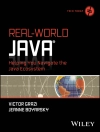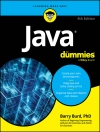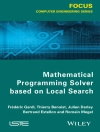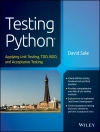A complete update covering the many advances to the XML language
The XML language has become the standard for writing documents on the Internet and is constantly improving and evolving. This new edition covers all the many new XML-based technologies that have appeared since the previous edition four years ago, providing you with an up-to-date introductory guide and reference. Packed with real-world code examples, best practices, and in-depth coverage of the most important and relevant topics, this authoritative resource explores both the advantages and disadvantages of XML and addresses the most current standards and uses of XML.
- Features the most updated content built on audience feedback from the previous edition as well as the vast knowledge from XML developer teams
- Boasts new chapters on RELAX NG and Schematron, XML functionality in databases, LINQ to XML, Jabber and XMLPP, XHTML, HTML5, and more
- Offers in-depth coverage on extracting data from XML and updated material on Web Services
Beginning XML, Fifth Edition delivers the most important aspects of XML in regard to what it is, how it works, what technologies surround it, and how it can best be used in a variety of situations.
İçerik tablosu
Introduction xxvii
Part I: Introducing XML
Chapter 1: What is XML? 3
Steps Leading up to XML: Data Representation and Markups 4
The Birth of XML 6
More Advantages of XML 10
XML in Practice 13
Summary 23
Chapter 2: Well-Formed XML 25
What Does Well-Formed Mean? 26
Creating XML in a Text Editor 26
Advanced XML Parsing 40
The XML Infoset 47
Summary 50
Chapter 3: XML Namespaces 53
Defining Namespaces 54
Why Do You Need Namespaces? 54
How Do You Choose a Namespace? 56
How to Declare a Namespace 58
Namespace Usage in the Real World 68
When to Use and Not Use Namespaces 72
Common Namespaces 75
Summary 78
Part II: Validation
Chapter 4: Document Type Definitions 83
What Are Document Type Definitions? 83
Anatomy of a DTD 93
DTD Limitations 114
Summary 114
Chapter 5: XML Schemas 117
Benefits of XML Schemas 118
XML Schemas in Practice 120
Defining XML Schemas 124
Creating a Schema from Multiple Documents 161
Documenting XML Schemas 167
XML Schema 1.1 170
Summary 171
Chapter 6: RELAX NG and Schematron 175
Why Do You Need More Ways of Validating XML? 176
Setting Up Your Environment 176
Using RELAX NG 177
Using Schematron 193
Summary 207
Part III: Processing
Chapter 7: Extracting Data from XML 211
Document Models: Representing XML in Memory 211
The XPath Language 216
Summary 236
Chapter 8: XSLT 239
How Is XSLT a Functional Language? 242
Setting Up Your XSLT Development Environment 242
Foundational XSLT Elements 245
Reusing Code in XSLT 276
Understanding Built-In Templates and Built-In Rules 282
Using XSLT 2.0 284
XSLT and XPath 3.0: What’s Coming Next? 302
Summary 303
Part IV: Databases
Chapter 9: XQuery 307
XQuery, XPath, and XSLT 308
XQuery in Practice 309
Building Blocks of XQuery 313
The Anatomy of a Query Expression 318
Some Optional XQuery Features 332
Coming in XQuery 3.0 333
Summary 338
Chapter 10: XML and Databases 341
Understanding Why Databases Need to Handle XML 341
Analyzing which XML Features are Needed in a Database 343
Using My SQL with XML 345
Using SQL Server with XML 355
Using e Xist with XML 386
Summary 399
Part V: Programming
Chapter 11: Event-Driven Programming 403
Understanding Sequential Processing 404
Using SAX in Sequential Processing 404
Using Xml Reader 434
Summary 448
Chapter 12: LINQ to XML 451
What Is LINQ? 451
Creating Documents 457
Extracting Data from an XML Document 461
Modifying Documents 468
Transforming Documents 472
Using VB.NET XML Features 474
Summary 480
Part VI: Communication
Chapter 13: RSS, Atom, and Content Syndication 485
Syndication 485
Working with News Feeds 501
A Simple Aggregator 502
Transforming RSS with XSLT 524
Useful Resources 534
Summary 535
Chapter 14: Web Services 539
What Is an RPC? 539
RPC Protocols 541
The New RPC Protocol: Web Services 543
The Web Services Stack 564
Summary 569
Chapter 15: SOAP and WSDL 573
Laying the Groundwork 574
The New RPC Protocol: SOAP 574
Defining Web Services: WSDL 600
Summary 612
Chapter 16: AJAX 615
AJAX Overview 615
Introduction to Java Script 617
The XMLHttp Request Function 623
Using HTTP Methods with AJAX 628
Accessibility Considerations 629
The j Query Library 630
JSON and AJAX 635
The Web Sever Back End 637
A Larger Example 639
Summary 644
Part VII: Display
Chapter 17: XHTML and HTML 5 649
Background of SGML 650
The Open Web Platform 651
Introduction to XHTML 652
XHTML and HTML: Problems and Workarounds 669
Cascading Style Sheets (CSS) 670
Unobtrusive Java Script 682
HTML 5 683
Summary 686
Chapter 18: Scalable Vector Graphics (SVG) 689
Scalable Vector Graphics and Bitmaps 689
The SVG Graphics Model 694
SVG and CSS 696
SVG Tools 698
SVG Basic Built-in Shapes 700
SVG Transforms and Groups 708
SVG Definitions and Metadata 709
Viewports and Coordinates 712
SVG Colors and Gradients 713
Including Bitmap Images in SVG 715
SVG Text and Fonts 716
SVG Animation Four Ways 717
SVG and HTML 5 720
SVG and Web Apps 721
Making SVG with XQuery or XSLT 722
Resources 722
Summary 723
Part VIII: Case Study
Chapter 19: Case Study: XML in Publishing 727
Background 727
Project Introduction: Current Workflow 728
Introducing a New XML-Based Workflow 728
Creating a New Process 730
Some Technical Aspects 733
The Hoy Books Website 741
Summary 746
Appendix A: Answers to Exercises 749
Appendix B: XPATH Functions 773
Appendix C: XML Schema Data Types 797
Index 811
Yazar hakkında
Joe Fawcett is the head of software at Kaplan Financial and was one of the first Microsoft MVPs for XML.
Liam R. E. Quin is the W3C XML Activity Lead and Staff Contact for the XML Query Working Group, and the XSL-FO subgroup of the XSL Working Group.
Danny Ayers works for Talis on applications for their hosted semantic web platform.












